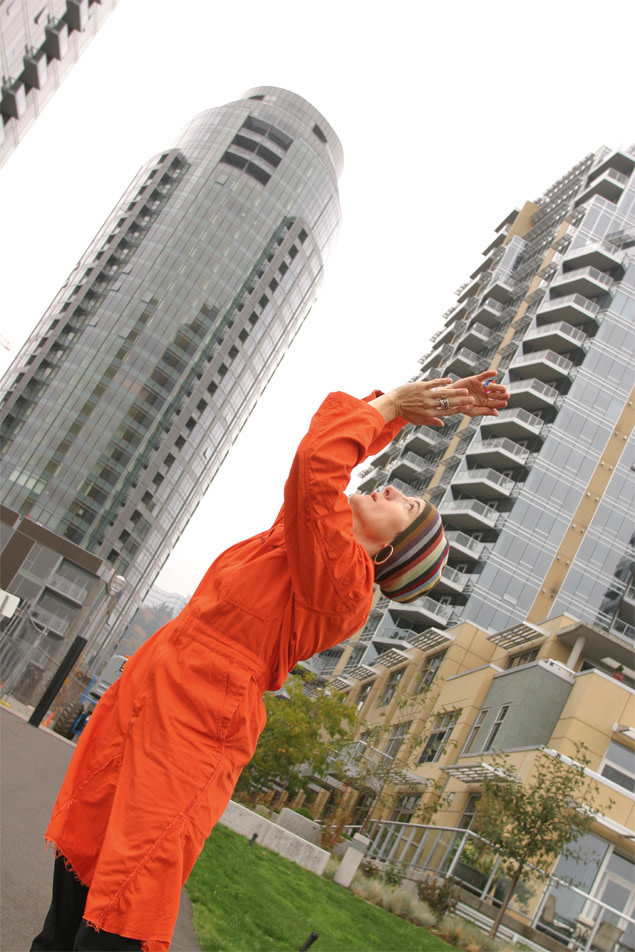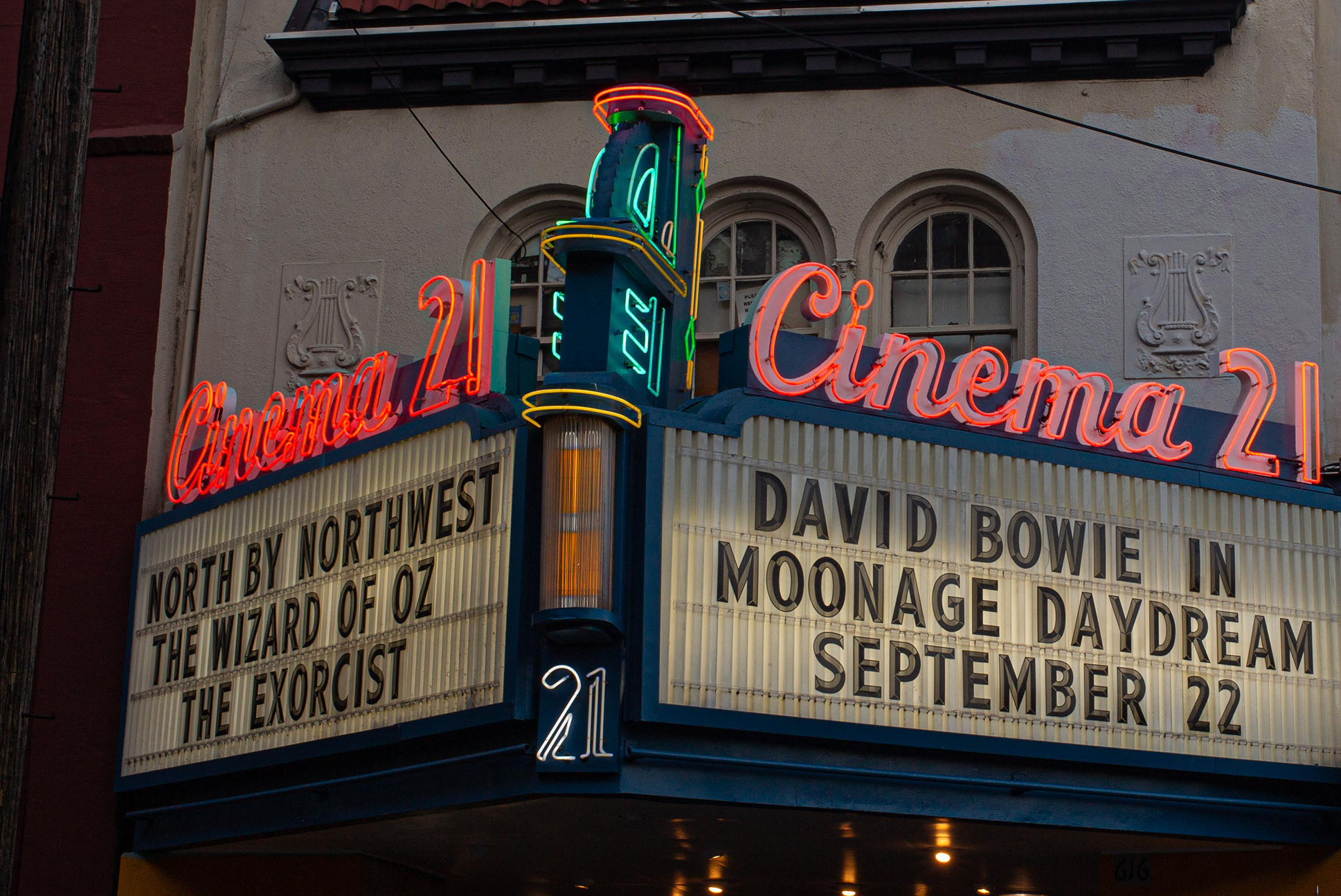Motion Detector

IT’S TWILIGHT in the South Waterfront, the glittering high-rise district under construction on a former brownfield near the base of the OHSU tram, and four people wearing headlamps and blazing-orange jumpsuits are dancing in a muddy vacant lot. They pinwheel their arms and spin around, while traffic on the Ross Island Bridge hisses by and a few geese pass overhead in a sloppy V. As the sky dims to a steely gray, the headlamps transform the dancers into cyclopes. Two bikers stop to watch through a chain-link fence.
“I’m going to take off all my clothes and ride through them,” says one of the bikers. And presently, he does. Twice.
Linda K. Johnson, one of the cyclopes—and the driving force behind the South Waterfront Artist in Residence program—seems unfazed by the streaker. For more than 20 years, the Portland choreographer has been staging performances in public places as a way of investigating “where we live and how we live,” as she puts it. In her 1999 work The View from Here, for example, she camped at six different sites along Portland’s urban growth boundary to encourage dialogue about the changing, once-rural landscape.
Johnson—an ebullient, quick-talking 45-year-old with cropped salt-and-pepper hair and blue eyes—describes her Monday night interventions as a way to “create images of what the [South Waterfront] might be like in the future.” Already she and her fellow dancers have encouraged passersby to join in a formal French picnic and learn how to waltz along the riverbank, as if evoking a utopian settlement to come. (There were no takers, unfortunately.) Guest artists—Johnson involved 13 in the yearlong project—have invited people to take audio walking tours of the district (artist-composer Tim DuRoche) and to share their dreams (visual artist Dana Lynn Louis). This month, writer David Oates will pose provocative questions (“Fill in the blank: This place will feel like home when…”) to South Waterfront residents and fuse their responses into a poem aimed at revealing the pros and cons of the city’s newest neighborhood. He’ll share the results at a public presentation on January 30.
It’s one way of reframing the conversation about a high-density development that many Portlanders regard as a mark of civic progress, but that others see as a gleaming 21st-century ghost town, where what passes for street life is the scattering of lone dog walkers in the evenings. Johnson’s proposal to enliven the streetscape with art appealed to Homer Williams of Williams & Dame Development and Mark Edlen of Gerding Edlen Development, the developers responsible for building the new district. As Williams sees it, community evolves “at the street level,” with relationships between neighbors, retailers, visitors and, yes, artists. He and Edlen agreed to lend Johnson a ground-floor studio in one of their newly completed condominium buildings, the John Ross Tower, and fund a private grant to bankroll the cost of installations and performances for an entire year.
Call it a new twist on a centuries-old tradition of arts patronage—would Renaissance painting have reached such great heights without deep church coffers?—or a marketing strategy to help put the emerging neighborhood on the cultural map. Whatever the case, the relationship seems to be working for Johnson.
Observing the area is a full-time job for the former director of education and outreach for Oregon Ballet Theatre—and a chance to explore her ongoing fascination with the evolving Portland cityscape and with the built environment in general. As part of her daily routine, she walks the South Waterfront area wearing her bright orange jumper, enacting a “movement journal.” The dance phrases are inspired by the landscape and its inhabitants: Maybe she’ll hold her nose because the river smells like fish; maybe she’ll mimic the window washers on a condo tower. These movements will become part of a much larger performance in July.
On a brisk Saturday morning, Johnson’s dance begins by the river, where she swings her arms to echo the smooth motions of rowers in their dragon boats. Two boys stop racing their electric cars to watch as Johnson mimes two cars snaking along hairpin curves. When Johnson finishes her dance, the boys lead her to the water’s edge to show her the fort they’re making. The small shelter made of salvaged boards is the latest South Waterfront construction project, a site-specific sculpture by a couple of very young, unofficial artists in residence, or, perhaps, just a sign of a neighborhood in the making.




